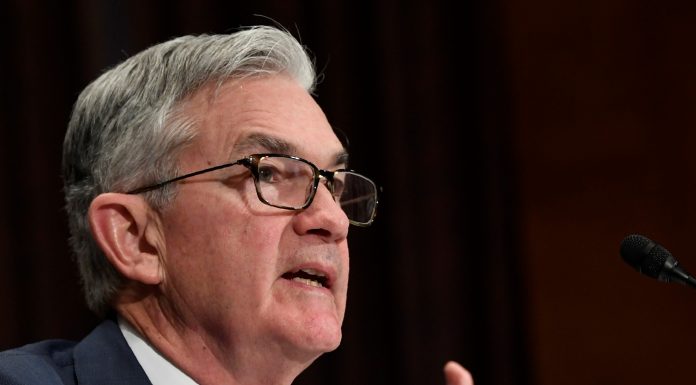(Associated Press) Stocks rose in morning trading on Wall Street Thursday after the Federal Reserve launched its latest unprecedented effort to support the economy through the coronavirus outbreak.
The central bank undertook actions to provide up to $2.3 trillion in loans to households, local governments and small and large businesses as the country tips into what economists say may be the worst recession in decades. It’s the latest massive move by the Fed, which has rushed to ensure cash gets to parts of the economy that need it after markets got snarled by a rush of investors pulling cash out of the system.
The stock market is not the economy, and that distinction has become even more clear this week. The S&P 500 was up 2% in early trading Thursday, the same day the government announced 6.6 million Americans applied for unemployment benefits last week as layoffs sweep the nation. The S&P 500 is on pace to jump more than 12% in this holiday-shortened week, its best since 1974.
That’s because stock investors are continuously looking ahead a few months to the future. From mid-February through late March, they sent stocks down by a third on expectations that a steep recession was imminent, before the economy really began to crunch.
In the last few weeks, though, investors have sent the market back up more than 20% following the massive aid promised by the Fed, other central banks and governments around the world, even as evidence piles up that the recession fears were prescient. This week, some investors have also begun to look ahead to the possibility that the economy could reopen amid signs the outbreak may be peaking or plateauing in several of the world’s hardest hit areas.
The Dow Jones Industrial Average rose 460 points, or 2%, to 23,894, as of 10:40 a.m. Eastern time. The Nasdaq was up 0.6%.
Many professional investors have been skeptical of the rally, saying too much uncertainty is still looming over markets. While hopes are building that a plateau may be arriving for deaths and infections in several global hotspots, it’s not assured. In the meantime, businesses continue to shut down and one in 10 U.S. workers has lost their jobs in the last three weeks.
The market’s big gains this week have also been somewhat tentative. On Tuesday, the S&P 500 charged to an early 3.5% gain before it all disappeared in the final minutes of trading. On Thursday, the index bounced between a gain of as much as 2.3% and a more modest 1% gain.
The end of the week is also looming, with the stock market closed on Friday for a holiday. The stock market has routinely sold off on the last day of the week recently, as some investors look to get out of the market before more bad news could pile up over the weekend.
The Fed’s programs announced Thursday would touch far-reaching corners of lending markets, even bonds for companies that have weak enough credit ratings to be called “junk,” or speculative grade.
Worries have been high about the ballooning amount of corporate debt that’s concentrated at the bottom edge of high-quality “investment grade.” The looming recession could push a lot of that into “junk” status, which would force many mutual funds and other investors to sell it because they’re required to hold only investment-grade bonds. The Fed’s new programs include some support for bonds that were rated at the bottom edge investment grade as of March 22 but subsequently got downgraded to the top tier of junk.
Exchange-traded funds tracking the junk bond market jumped more than 7% in morning trading.
Benchmark U.S. crude oil jumped $2.72, or 10.8%, to $27.81 per barrel amid speculation that oil producers may announce cuts in production to prop up its price. Oil has dropped from more than $60 at the start of the year as demand for energy dries up in a weakened economy and producers continue to pull crude from the ground.



